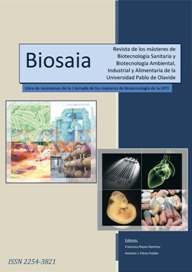Antibacterial activity of colloidal silver against Gram-negative and Gram-positive bacteria.
Palabras clave:
Multidrug resistant bacteria, colloidal silver, Gram-negative, Gram-positiveResumen
Motivation: Treatment of multidrug-resistant (MDR) bacteria represent a challenge for clinicians and public health authorities. Due to the emergence of resistance to a wide variety of antibiotics new alternative therapies are needed. Silver has been used to treat bacterial infections since antiquity due to its known antimicrobial properties [1]. The objective of this project was to study in vitro the activity of colloidal silver against Gram-negative and Gram-positive bacteria.
Methods: Gram-negative bacteria [Acinetobacter baumannii (n=44), Pseudomonas aeruginosa (n=25) and Escherichia coli (n=79)] and Gram-positive bacteria [Staphylococcus aureus (n=34), Syaphylococcus epidermidis (n=14) and Enterococcus spp. (n=15)] were used. All strains were grown in a Mueller-Hinton Broth (MHB) at 37°C for 20-24 h. Minimal Inhibitory Concentration (MIC) was determined for all strains by using microdilution assay. To monitore the antibacterial activity, time-kill curve assays were performed on MHB at colloidal silver concentrations of 0.5x, 1x and 2x MIC with starting inoculum of 1x10^6 colony-forming units (cfu)/mL. Reactive Oxygen Species (ROS) production was measured at 6, 20 and 24 hours at colloidal silver concentrations of 0.25x, 0.5x and 1x MIC.
Results: Colloidal silver MIC range was from 4-8 mg/L for both Gram-negative and Gram-positive bacteria. Colloidal silver showed bactericidal activity against Gram-negative bacteria. However, it showed bacteriostatic activity against Gram-positive bacteria. For A. baumannii (Ab11 and ATCC 17978 strains), P. aeruginosa (Pa238 and Pa01 strains), and E. coli (mcr-1 positive strain) colloidal silver was bactericidal at 1x, and 2x MIC at 24h. However, at 24h, E. coli (ATCC 25922 strain) showed a regrowth at 0.5x, 1x and 2x MIC. Incubation of bacterial strains with colloidal silver led to a significant increase in ROS production at 24h in Gram-negative bacteria.
Conclusions: Colloidal silver showed in vitro activity against these kind of pathogens, especially against Gram-negative bacteria. These results suggest that colloidal silver could be a new alternative for treatment of infections caused by MDR pathogens.




